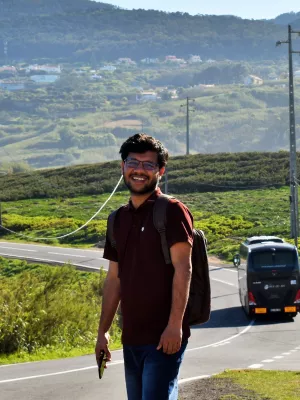
Md. Rafikul Islam
Doctoral student

Stand level carbon stocks in the soil-vegetation system of the coastal mangrove plantations in Bangladesh : Effect of stand age and choice of species
Author
Summary, in English
Mangrove plantations are crucial for carbon sequestration in global climate change mitigation efforts. However, the dynamics and partitioning of carbon stocks in the soil vegetation system in mangrove plantations are little understood. We assessed the carbon stocks across different plantation age groups, species, and sites. Our findings revealed that soil C concentration ranged from 0.4 to 1.5%, and soil carbon stocks varied from 30 to 90 Mg ha−1, with an average of 58 Mg ha−1 in 100 cm soil depth. The C concentration of top 30 cm layer was significantly higher than that of other layers up to 100 cm. The soil C stocks increased with increasing stand age up to a middle age of approximately 25 years, after which they reached a plateau at around 50 years. The biomass carbon stocks of Sonneratia apetala was 6.7 Mg ha−1 in young stands to 791.1 Mg ha−1 in the older stands, which ranged from 112.1 to 405.9 Mg ha−1 in Avicennia officinalis and 37.5 to 198.3 Mg ha−1 in Excoecaria agallocha. Although the coastal mangrove plantation projects in Bangladesh consists mainly of S. apetala, A. officinalis would also be planted considering its carbon stocks. We also developed allometric equations for stand-level C stocks in coastal mangrove plantations in Bangladesh based on basal area, tree height, and wood density of the mangrove species. Analyzing the C stocks partitioning in aboveground, belowground, and soil at different stand ages, we found that about 30% of C is stored in the soil of young stands, which declines to about 12% in older stands. This suggests that the relative growth in biomass C is much faster than soil C storage with the progress of stand age. The results of this study would support coastal afforestation and reforestation efforts to mitigate climate change.
Department/s
- Centre for Environmental and Climate Science (CEC)
- BECC: Biodiversity and Ecosystem services in a Changing Climate
- MERGE: ModElling the Regional and Global Earth system
Publishing year
2023
Language
English
Publication/Series
Regional Studies in Marine Science
Volume
63
Document type
Journal article
Publisher
Elsevier
Topic
- Soil Science
- Environmental Sciences related to Agriculture and Land-use
Keywords
- Aboveground-carbon
- Allometric equation
- Belowground-carbon
- Carbon partitioning
- Coastal afforestation
- Mangrove plantation
- Soil-carbon
Status
Published
ISBN/ISSN/Other
- ISSN: 2352-4855